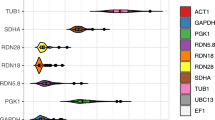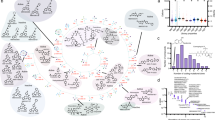Abstract
To study differences in SRB1 gene expression between Candida albicans fluconazole-resistant strains and fluconazole-sensitive strains, and to identify new antifungal drug treatment targets. We studied 30 fluconazole-resistant and 47 fluconazole-sensitive C. albicans strains. The strains were routinely cultured, and total RNA was extracted, reverse transcribed into cDNA and analyzed with real-time PCR amplification with 18S rRNA used as an internal reference gene. The expression levels of the two groups were analyzed in Light Cycler system software version 3.0, and independent Student’s t test was performed in SPSS 19.0 statistical software. P < 0.05 was considered to indicate a statistical difference. DNAMAN multiple sequence alignment analysis was used to randomly analyze SBR1 related sequences of four resistant strains and four sensitive strains. An evolutionary tree was constructed with the maximum likelihood method in Mega6.0 software. The mean SRB1 gene expression in the drug-resistant group was 0.75138 × 10–3, and that in the sensitive group was 1.6664 × 10–3. Independent Student’s t test indicated a statistically significant difference (T = −3.972, P = 0.000, P < 0.05). DNAMAN multiple sequence alignment analysis showed that the sequence identity of the CDS in the eight strains was 75.17%, and that of sequences 1000 bp upstream of the CDS was 96.35%. Cluster analysis showed that the CDS and sequences 1000 bp upstream of the CDS showed no significant differences between groups. At the mRNA level, the SRB1 gene expression in fluconazole-resistant C. albicans was lower than that in fluconazole-sensitive strains, thus suggesting that the gene may be associated with drug resistance and that the regulatory mechanism leading to this difference is complex.
This is a preview of subscription content, access via your institution
Access options
Subscribe to this journal
Receive 12 print issues and online access
$259.00 per year
only $21.58 per issue
Buy this article
- Purchase on Springer Link
- Instant access to full article PDF
Prices may be subject to local taxes which are calculated during checkout





Similar content being viewed by others
References
Arendrup MC. Epidemiology of invasive candidiasis. Curr Opin Crit Care. 2010;16:445–52.
Kullberg BJ, Arendrup MC. Invasive candidiasis. N Engl J Med. 2015;373:1445–56.
Ohta A, Chibana H, Arisawa M, et al. The VIG9 gene products from the human pathogenic fungi Candida albicans and Candida glabrata encode GDP-mannose pyrophosphorylase. Biochim Biophys Acta. 2000;1475:265–72.
Mora-Montes HM, Bates S, Netea MG, et al. A multifunctional mannosyltransferase family in Candida albicans determines cell wall mannan structure and host-fungus interactions. J Biol Chem. 2010;285:12087–95.
Laiqiang G, Haiying W, Xuehong W, et al. Comparative analysis of the expression of fluconazole-resistant and sensitive strains of Candida albicans in SRB1, CDR1 and ERG11. Chin J Mycol. 2017;12:148–51.
Warit S, Walmsley RM, Stateva LI. Cloning and sequencing of the Candida albicans homologue of SRB1/PSA1/VIG9, the essential gene encoding GDP-mannose pyrophosphorylase in Saccharomyces cerevisiae. Microbiology. 1998;144:2417–26.
Warit S, Zhang N, Short A, et al. Glycosylation deficiency phenotypes resulting from depletion of GDP-mannose pyrophosphorylase in two yeast species. Mol Microbiol. 2000;36:1156–66.
Warit S, Stateva LI, Palittapongarnpim P. Cloning and heterologous expression of Cryptococcus neoformans CnSRB1 cDNA in Saccharomyces cerevisiae. Southeast Asian J Trop Med Public Health. 2008;39:484–91.
Zhang N, Gardner DC, Oliver SG, et al. Down-regulation of the expression of PKC1 and SRB1/PSA1/VIG9, two genes involved in cell wall integrity in Saccharomyces cerevisiae, causes flocculation. Microbiology. 1999;145:309–16.
Funding
This study was funded by National Natural Science Foundation (grant number 81971990), Municipal Human Resources Development Program for Outstanding Leaders in Medical Disciplines in Shanghai (grant number 2017BR032), the Top-level Clinical Discipline Project of Shanghai Pudong PWYgf 2018-05.
Author information
Authors and Affiliations
Corresponding author
Ethics declarations
Conflict of interest
The authors declare that they have no conflict of interest.
Additional information
Publisher’s note Springer Nature remains neutral with regard to jurisdictional claims in published maps and institutional affiliations.
Rights and permissions
About this article
Cite this article
Ji, L., Zhou, A., Yu, X. et al. Differential expression analysis of the SRB1 gene in fluconazole-resistant and susceptible strains of Candida albicans. J Antibiot 73, 309–313 (2020). https://doi.org/10.1038/s41429-020-0283-8
Received:
Revised:
Accepted:
Published:
Issue Date:
DOI: https://doi.org/10.1038/s41429-020-0283-8



